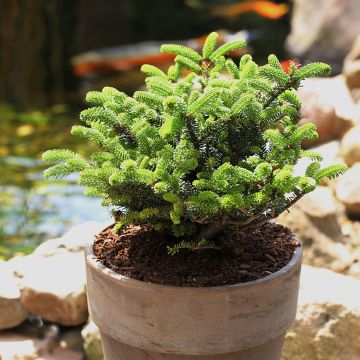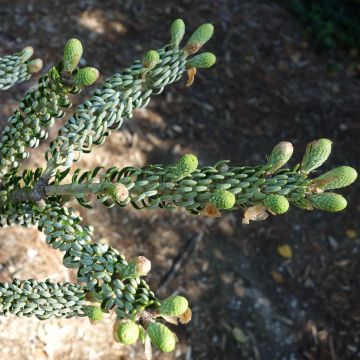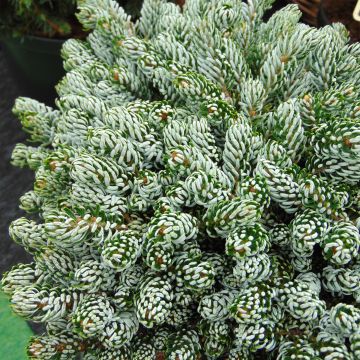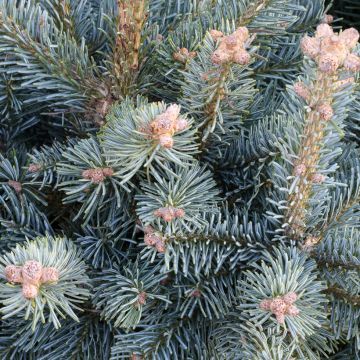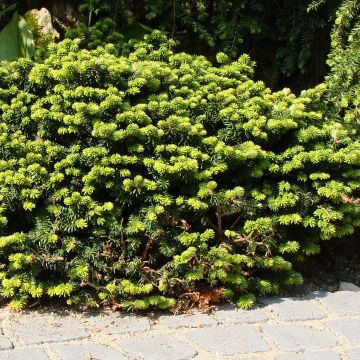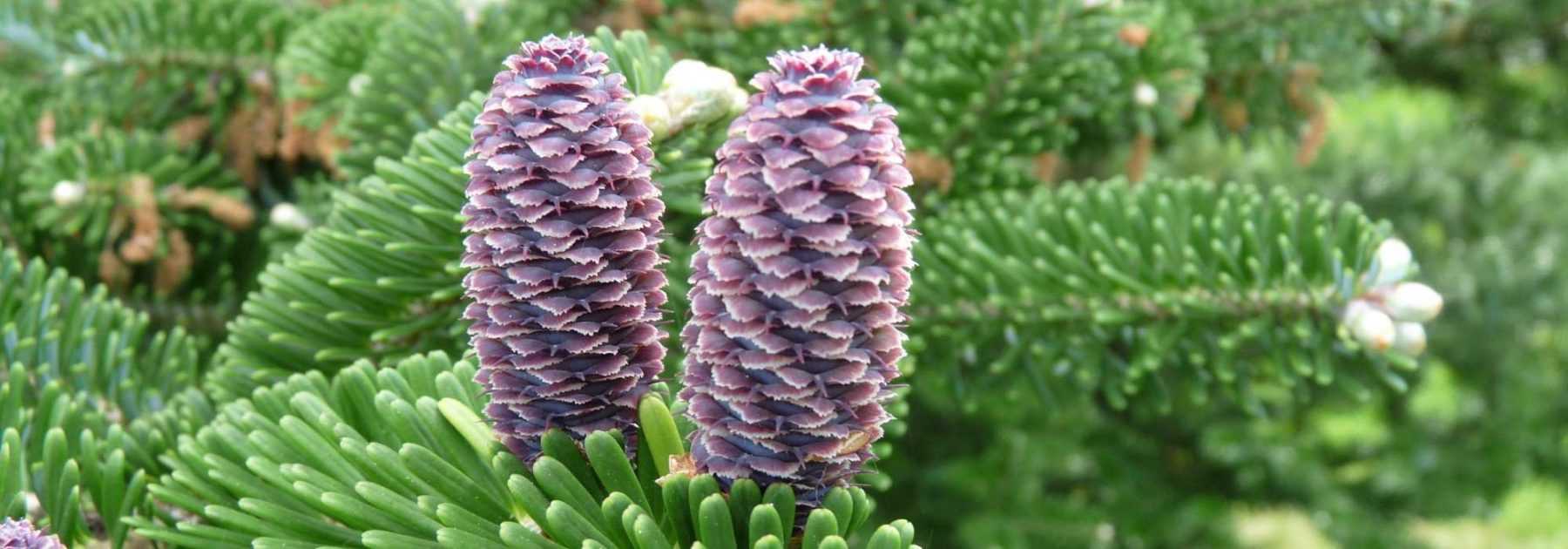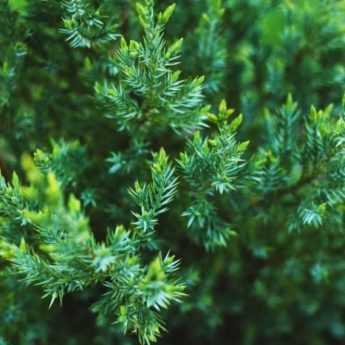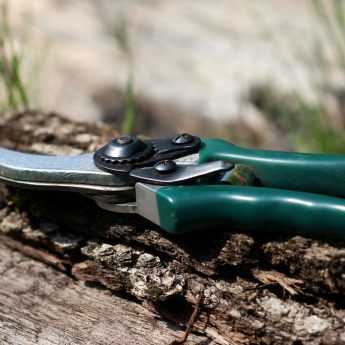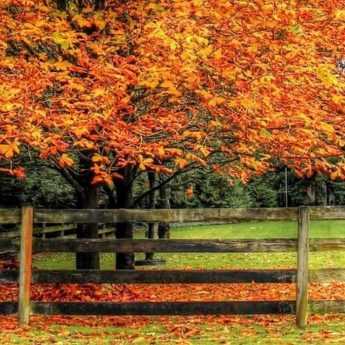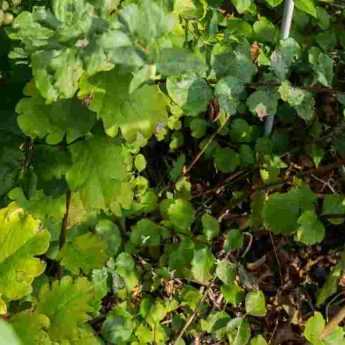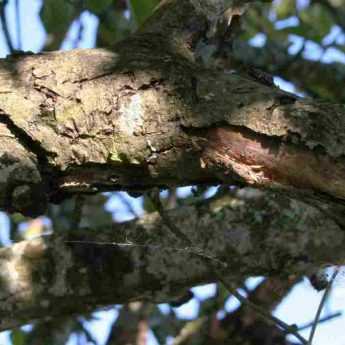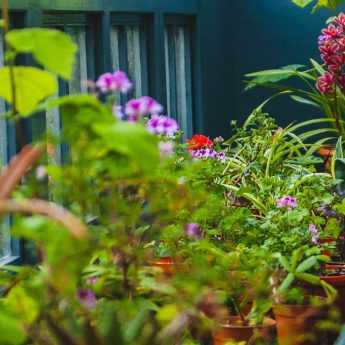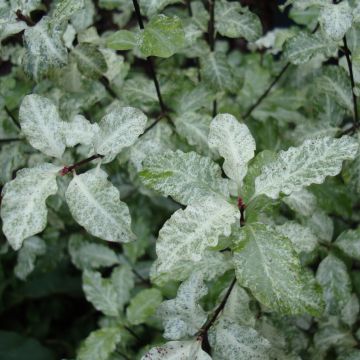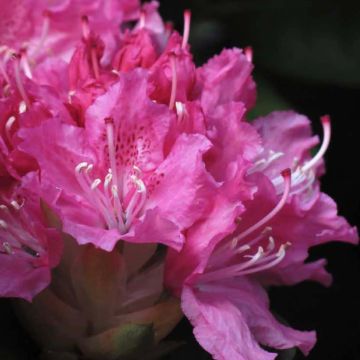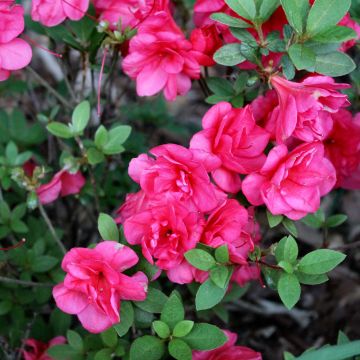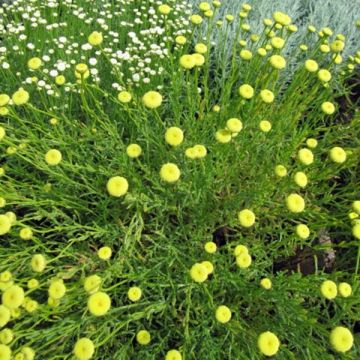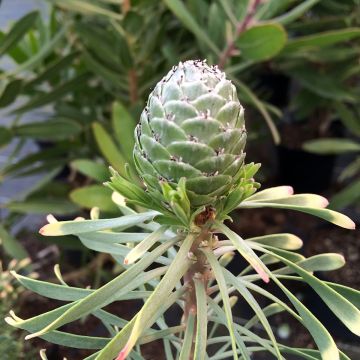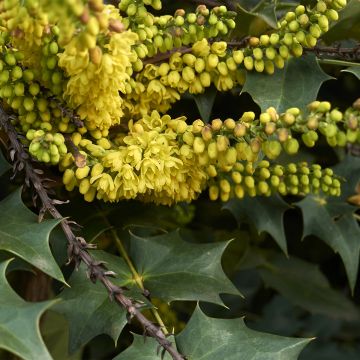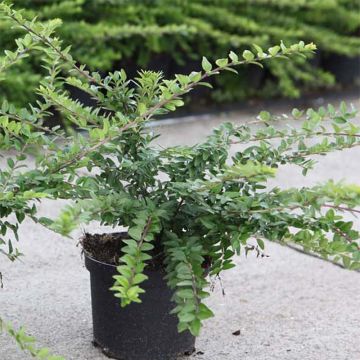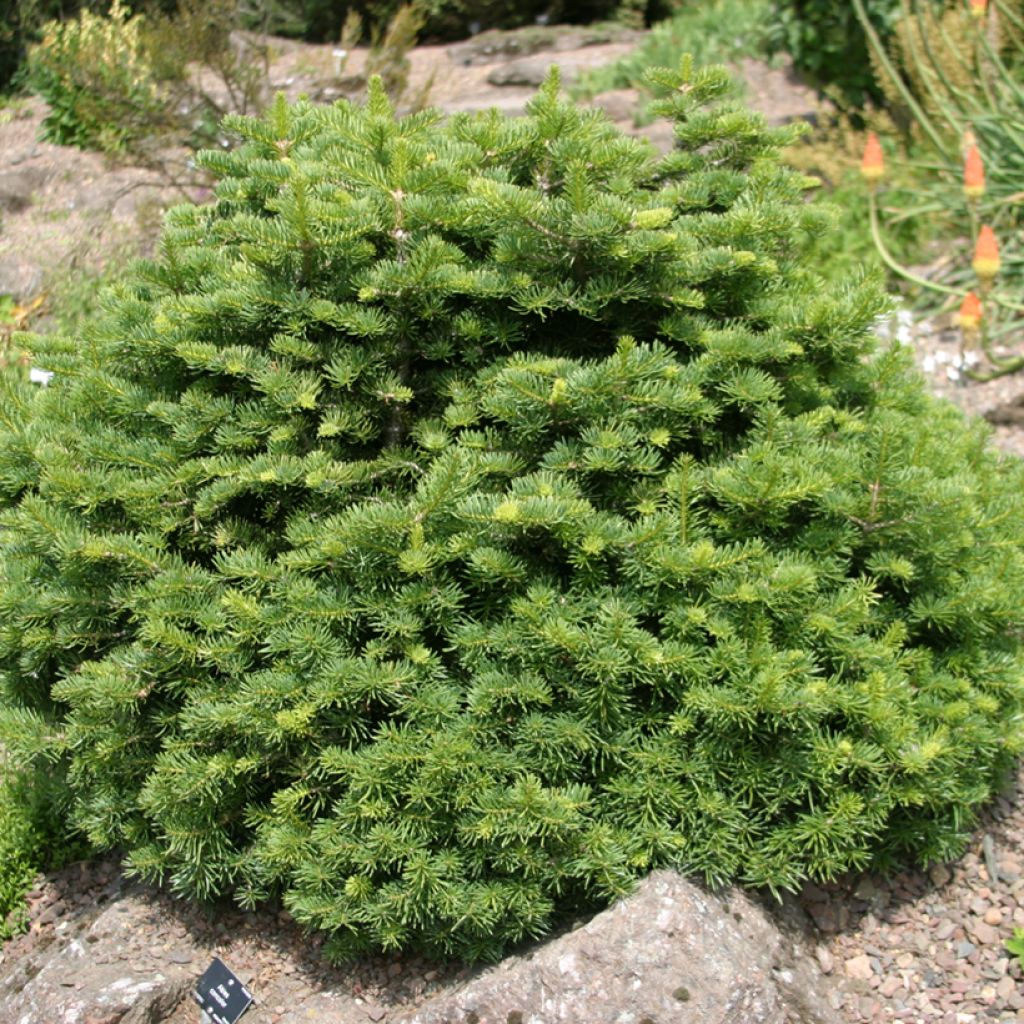

Abies lasiocarpa 'Green Globe' - Sapin des Rocheuses, Sapin de Lobb, Sapin subalpin, Sapin blanc d'Amérique
Abies lasiocarpa 'Green Globe' - Sapin des Rocheuses, Sapin de Lobb, Sapin subalpin, Sapin blanc d'Amérique
Abies lasiocarpa 'Green Globe'
Sapin des Rocheuses, Sapin de Lobb, Sapin subalpin, Sapin blanc d'Amérique
Why not try an alternative variety in stock?
View all →This plant carries a 24 months recovery warranty
More information
We guarantee the quality of our plants for a full growing cycle, and will replace at our expense any plant that fails to recover under normal climatic and planting conditions.
Does this plant fit my garden?
Set up your Plantfit profile →
Description
The Abies lasiocarpa ‘Green Globe’ is a small subalpine fir with a rounded habit and compact growth becoming conical over time. Slow-growing and modest in size, it is ideal for a rock garden, flower bed, or container. It can also be used to create a bonsai. Its needles retain their dark greyish-green colour all year round. Easy to grow and very hardy, plant it in a cool, well-drained, non-calcareous soil in full sun or partial shade.
From the Pinaceae family, the Abies lasiocarpa also known as the subalpine fir or Rocky Mountain fir is a widespread evergreen conifer in western North America. In its native range, this fir can reach between 20 and 50 m in height, with a trunk of up to 1 m in diameter. Much more modest in size, the American cultivar from Verkade Nurseries in 1979, the subalpine fir ‘Green Globe’, forms a rounded cushion that gradually becomes more conical over time. After 10 years, it measures between 50 and 70 cm in all directions, eventually reaching 1 to 1.5 m with age. Its growth rate is around 7 to 15 cm per year. Its branches are short, and its foliage is dense. Its needles are short, between 2 and 3 cm long, and non-prickly. When young, they are light green before turning dark green with silvery highlights.
With its globose habit and small size, the Abies lasiocarpa 'Green Globe' will find its place in a rock garden, paired with other dwarf conifers. Play with foliage colours to create contrast with a Pinus mugo ‘Mops’ and Juniperus horizontalis ‘Icee Blue’. In a flower bed, pair it with perennials and white-flowering bushes that will brighten its dark foliage, such as a Geranium sanguineum ‘Album’ and Hydrangea ‘Mme Emile Mouillère’. It will provide a permanent container display on a patio or balcony. Pair it with pansies, primroses, and cyclamens to add colour.
Plant habit
Foliage
Botanical data
Abies
lasiocarpa
'Green Globe'
Pinaceae
Sapin des Rocheuses, Sapin de Lobb, Sapin subalpin, Sapin blanc d'Amérique
Cultivar or hybrid
Other Abies
View all →Planting and care
Plant the Abies lasiocarpa 'Green Globe' in fertile, well-loosened, neutral to slightly acidic, cool, and well-drained soil. This conifer does not tolerate lime well. Choose a location that is ideally sunny or partially shaded. In warmer regions, avoid exposure to afternoon sun. Water your Rocky Mountain fir regularly during the first two to three summers after planting. Once well-rooted, it can withstand periods of summer drought.
Planting period
Intended location
Care
Planting & care advice
This item has not been reviewed yet - be the first to leave a review about it.
Similar products
Haven't found what you were looking for?
Hardiness is the lowest winter temperature a plant can endure without suffering serious damage or even dying. However, hardiness is affected by location (a sheltered area, such as a patio), protection (winter cover) and soil type (hardiness is improved by well-drained soil).

Photo Sharing Terms & Conditions
In order to encourage gardeners to interact and share their experiences, Promesse de fleurs offers various media enabling content to be uploaded onto its Site - in particular via the ‘Photo sharing’ module.
The User agrees to refrain from:
- Posting any content that is illegal, prejudicial, insulting, racist, inciteful to hatred, revisionist, contrary to public decency, that infringes on privacy or on the privacy rights of third parties, in particular the publicity rights of persons and goods, intellectual property rights, or the right to privacy.
- Submitting content on behalf of a third party;
- Impersonate the identity of a third party and/or publish any personal information about a third party;
In general, the User undertakes to refrain from any unethical behaviour.
All Content (in particular text, comments, files, images, photos, videos, creative works, etc.), which may be subject to property or intellectual property rights, image or other private rights, shall remain the property of the User, subject to the limited rights granted by the terms of the licence granted by Promesse de fleurs as stated below. Users are at liberty to publish or not to publish such Content on the Site, notably via the ‘Photo Sharing’ facility, and accept that this Content shall be made public and freely accessible, notably on the Internet.
Users further acknowledge, undertake to have ,and guarantee that they hold all necessary rights and permissions to publish such material on the Site, in particular with regard to the legislation in force pertaining to any privacy, property, intellectual property, image, or contractual rights, or rights of any other nature. By publishing such Content on the Site, Users acknowledge accepting full liability as publishers of the Content within the meaning of the law, and grant Promesse de fleurs, free of charge, an inclusive, worldwide licence for the said Content for the entire duration of its publication, including all reproduction, representation, up/downloading, displaying, performing, transmission, and storage rights.
Users also grant permission for their name to be linked to the Content and accept that this link may not always be made available.
By engaging in posting material, Users consent to their Content becoming automatically accessible on the Internet, in particular on other sites and/or blogs and/or web pages of the Promesse de fleurs site, including in particular social pages and the Promesse de fleurs catalogue.
Users may secure the removal of entrusted content free of charge by issuing a simple request via our contact form.
The flowering period indicated on our website applies to countries and regions located in USDA zone 8 (France, the United Kingdom, Ireland, the Netherlands, etc.)
It will vary according to where you live:
- In zones 9 to 10 (Italy, Spain, Greece, etc.), flowering will occur about 2 to 4 weeks earlier.
- In zones 6 to 7 (Germany, Poland, Slovenia, and lower mountainous regions), flowering will be delayed by 2 to 3 weeks.
- In zone 5 (Central Europe, Scandinavia), blooming will be delayed by 3 to 5 weeks.
In temperate climates, pruning of spring-flowering shrubs (forsythia, spireas, etc.) should be done just after flowering.
Pruning of summer-flowering shrubs (Indian Lilac, Perovskia, etc.) can be done in winter or spring.
In cold regions as well as with frost-sensitive plants, avoid pruning too early when severe frosts may still occur.
The planting period indicated on our website applies to countries and regions located in USDA zone 8 (France, United Kingdom, Ireland, Netherlands).
It will vary according to where you live:
- In Mediterranean zones (Marseille, Madrid, Milan, etc.), autumn and winter are the best planting periods.
- In continental zones (Strasbourg, Munich, Vienna, etc.), delay planting by 2 to 3 weeks in spring and bring it forward by 2 to 4 weeks in autumn.
- In mountainous regions (the Alps, Pyrenees, Carpathians, etc.), it is best to plant in late spring (May-June) or late summer (August-September).
The harvesting period indicated on our website applies to countries and regions in USDA zone 8 (France, England, Ireland, the Netherlands).
In colder areas (Scandinavia, Poland, Austria...) fruit and vegetable harvests are likely to be delayed by 3-4 weeks.
In warmer areas (Italy, Spain, Greece, etc.), harvesting will probably take place earlier, depending on weather conditions.
The sowing periods indicated on our website apply to countries and regions within USDA Zone 8 (France, UK, Ireland, Netherlands).
In colder areas (Scandinavia, Poland, Austria...), delay any outdoor sowing by 3-4 weeks, or sow under glass.
In warmer climes (Italy, Spain, Greece, etc.), bring outdoor sowing forward by a few weeks.


































